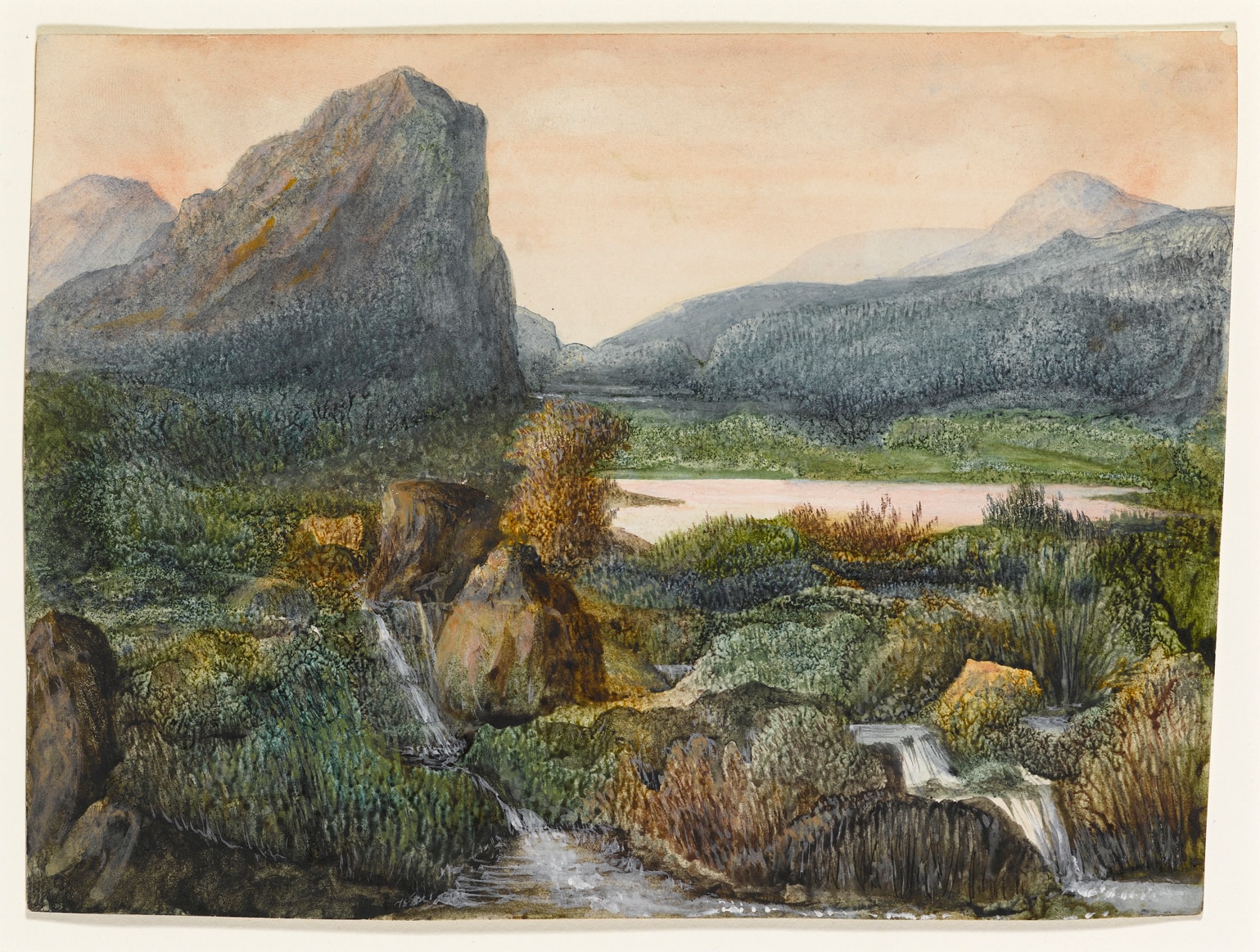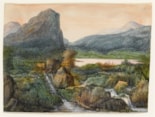George SAND
(Paris 1804 - Nohant 1876)
Mountainous Landscape with a Lake and Waterfalls
Sold
Watercolour, gouache and dendrite on paper.
151 x 204 mm. (5 7/8 x 8 in.)
ACQUIRED BY THE ALLEN MEMORIAL ART MUSEUM, OBERLIN, OH.
151 x 204 mm. (5 7/8 x 8 in.)
ACQUIRED BY THE ALLEN MEMORIAL ART MUSEUM, OBERLIN, OH.
Towards the very end of her life - it is first mentioned, as an amusement, in a letter of February 1874 – George Sand began producing watercolour drawings, using a distinctive technique, which she called ‘dendrites’, comparing them with the appearance of fossilized plants. These drawings were produced by applying pigment (often green) to a sheet of thick Bristol paper and, while it was still wet, pressing another sheet of paper on top of it. The random shapes created by this method of mixing pigments would then be worked on by the artist with watercolours, creating imaginary landscapes. Sand also sometimes referred to the technique as 'aquarelle à l'écrasage' (‘crushed watercolour’) and, as she described these works, ‘This crushing produced ridges which are sometimes curious. Assisting my imagination, I see woods, forests or lakes, and I accentuate the vague shapes produced by chance.’
A number of these ‘dendrite’ watercolours by Sand are today in the Louvre and others are in the collections of the Musée de la Vie Romantique in Paris and Sand’s home at the Château de Nohant, as well as in several private collections.
A number of these ‘dendrite’ watercolours by Sand are today in the Louvre and others are in the collections of the Musée de la Vie Romantique in Paris and Sand’s home at the Château de Nohant, as well as in several private collections.
The French Romantic novelist, playwright and memoirist Amantine Lucile Dupin is better known by her pseudonym George Sand, which she adopted from around 1831 onwards. A prolific writer and essayist, Sand was also notorious for her romantic affairs with several distinguished men, notably a ten-year relationship with Frédéric Chopin.
Provenance
Acquired in 1967 by the University Art Gallery, University of Massachusetts, Amherst (Inv. UM.67.32), until de-accessioned in 2012
Their sale, Paris, Sotheby’s, 23 June 2011, lot 144.




